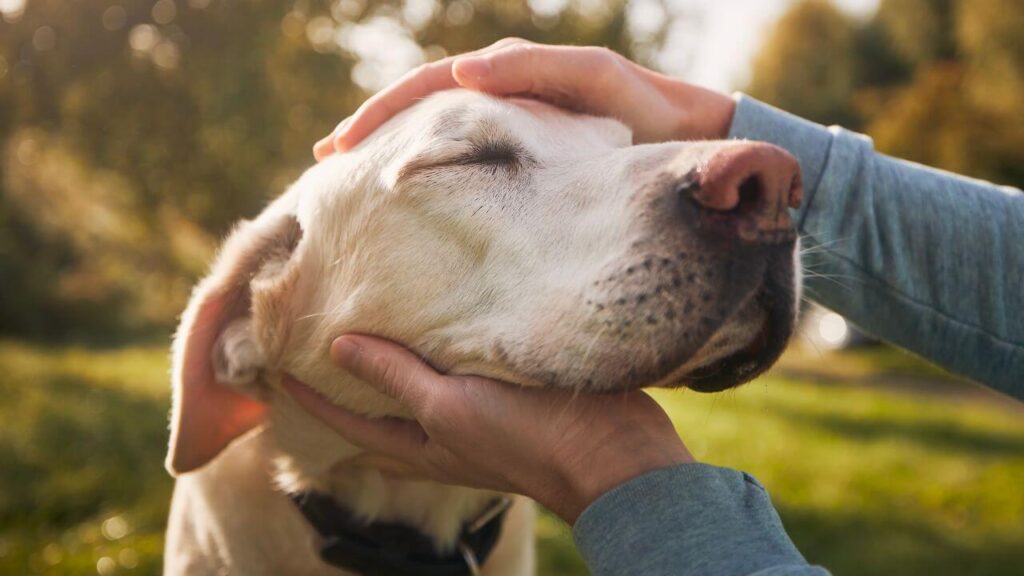Your faithful companion has been by your side for years, eagerly greeting you at the door and ready for adventure. But lately, those once-bouncy steps have slowed, and the mile-long hikes have become challenging. As dogs age, their exercise needs change dramatically, and what worked for them in their younger years may no longer serve them well.
Senior dog walking requires a thoughtful approach that balances physical activity with comfort and safety. While exercise remains essential for maintaining mobility, mental stimulation, and overall health, aging paws need gentler routines that accommodate their changing bodies.
Understanding how to adapt your walks can help your senior dog stay active while preventing pain, injury, and exhaustion.
This guide will walk you through everything you need to know about creating the perfect gentle dog exercise routine for your aging companion.
Understanding Senior Dog Needs
Dogs are generally considered seniors when they reach about seven years of age, though larger breeds may age faster. At this stage, their bodies undergo significant changes that affect how they move and exercise.
Joint pain and stiffness from arthritis become increasingly common, making those morning walks more difficult than they once were. Many senior dogs also experience reduced stamina and tire more easily, even on routes they previously handled with ease. Respiratory issues can develop, particularly in breeds already prone to breathing difficulties like pugs or bulldogs.
Muscle mass and bone density naturally decrease with age, which increases the risk of injury during physical activity. Some older dogs develop vision or hearing impairments that affect their spatial awareness and ability to navigate safely. Cognitive decline may also occur, potentially causing disorientation or anxiety during walks.
Pre-existing health conditions require special consideration too. Heart disease, diabetes, and other chronic illnesses can impact your dog’s energy levels and exercise capacity. Additionally, medications prescribed for aging dog care may have side effects that affect mobility or stamina.
The good news? Regular, gentle exercise can actually help manage many of these conditions by maintaining joint flexibility, supporting cardiovascular health, and providing mental enrichment.
Preparing for the Walk
Before heading out, take a moment to assess your senior dog’s condition. Check for any signs of discomfort, limping, or unusual stiffness. If your dog seems particularly tired or reluctant to move, it might be better to skip the walk or keep it very brief.
Choose the Right Gear
Invest in equipment that supports your aging dog’s needs. A well-fitted harness distributes pressure more evenly than a collar, reducing strain on the neck and throat. Consider a harness with a handle on top, which allows you to provide gentle support if your dog needs help over obstacles.
A shorter leash gives you better control and helps prevent sudden movements that could cause injury. For dogs with vision problems, consistent use of the same leash type helps them understand boundaries through familiar sensations.
Protective booties can shield sensitive paw pads from hot pavement, cold surfaces, or rough terrain. While some dogs initially resist wearing them, most adjust quickly, and the protection they offer is worth the transition period.
Timing Matters
Senior dogs often struggle with temperature regulation. During summer months, walk early in the morning or late in the evening when temperatures are cooler. Hot pavement can burn sensitive paw pads, so test the ground with your hand before setting out.
Winter walks require equal caution. Cold weather can exacerbate joint pain and stiffness. If temperatures drop significantly, consider shorter, more frequent walks rather than one longer outing. A doggy sweater or coat can help maintain body temperature.
Gentle Walking Routines
The key to successful senior dog walking lies in adapting your routine to match your dog’s current capabilities rather than their past performance.
Start Slow and Short
Begin with brief five to ten-minute walks, observing how your dog responds.
Some seniors may still enjoy longer outings, while others prefer multiple short walks throughout the day. Pay attention to your dog’s pace and resist the urge to rush them.
Let your senior dog set the speed. If they want to stop and sniff, allow them that time. Mental stimulation from investigating their environment is just as valuable as physical exercise, and it doesn’t tax their body as much as continuous walking.
Choose Appropriate Terrain
Flat, even surfaces work best for senior dogs. Avoid steep hills, stairs, or rocky paths that require extra effort and balance. Grass or dirt trails are gentler on aging joints than concrete or asphalt.
If your regular route includes challenging sections, find alternatives that offer easier navigation. Parks with paved paths or quiet residential streets often provide ideal conditions for gentle dog exercise.
Incorporate Rest Breaks
Plan your route with rest stops in mind. Bring a portable water bowl and offer drinks regularly, especially on warmer days. Let your dog rest in shaded areas if they seem tired or are panting heavily.
These breaks aren’t interruptions to the walk; they’re essential components of a senior-appropriate routine. Use this time to check your dog’s condition and decide whether to continue or head home.

Monitoring and Adjusting
Learning to read your senior dog’s signals during walks is crucial for their safety and comfort.
Watch for signs of fatigue like excessive panting, lagging behind, or reluctance to continue. If your dog sits or lies down during the walk, they’re telling you they need rest. Forcing them to continue could lead to injury or health complications.
Limping, favoring a leg, or walking with a stiff gait indicates discomfort. If you notice these signs, cut the walk short and consult your veterinarian. Joint pain and other age-related conditions often require professional management.
Some senior dogs may become disoriented, especially if cognitive decline is present. If your dog seems confused or anxious, stick to familiar routes where they feel secure.
Be prepared to adjust your routine as your dog ages.
What works this month may need modification in a few months. Flexibility and attentiveness ensure your senior dog continues to benefit from walks without experiencing distress.
Post-Walk Care
The walk doesn’t end when you arrive home. Proper post-walk care helps your senior dog recover comfortably and prevents stiffness later.
Allow a gradual cooldown rather than abrupt stops.
Walk at a slower pace as you approach home, giving your dog’s muscles time to relax. Once inside, offer fresh water and let your dog rest in a comfortable spot.
Check your dog’s paws for any cuts, irritation, or foreign objects lodged between the pads. Wipe them clean if they’ve walked through anything messy or potentially irritating.
Watch for delayed signs of overexertion. Some dogs may seem fine immediately after a walk but show increased stiffness or fatigue hours later. If this happens consistently, your walks may be too long or strenuous.
Consider gentle massage or stretching exercises recommended by your veterinarian. These can help maintain flexibility and ease muscle tension. Some dogs also benefit from joint supplements or other supports as part of their aging dog care routine.
If post-walk discomfort becomes regular, consult your vet about pain management options. Many senior dogs thrive when their arthritis or joint pain is properly addressed.
Keeping Your Senior Dog Active and Happy
Walking your senior dog doesn’t have to be complicated, but it does require attention and adaptation. By understanding their changing needs and adjusting your routines accordingly, you can help them stay active, engaged, and comfortable well into their golden years.
Remember that every dog ages differently. What works for one senior may not suit another, even within the same breed. Stay observant, remain flexible, and prioritize your dog’s comfort above all else.
If you’re unsure about creating the right exercise routine for your aging companion, or if you need help providing gentle, appropriate walks while you’re at work, Vanda of I’ll Walk Your Dogs can help. Professional dog walkers experienced in senior dog walking understand the unique needs of older dogs and can provide the careful, attentive care your faithful friend deserves.
Your senior dog has given you years of unconditional love and companionship.
Now it’s your turn to ensure their remaining years are filled with gentle adventures that keep their tail wagging without causing pain or exhaustion.

